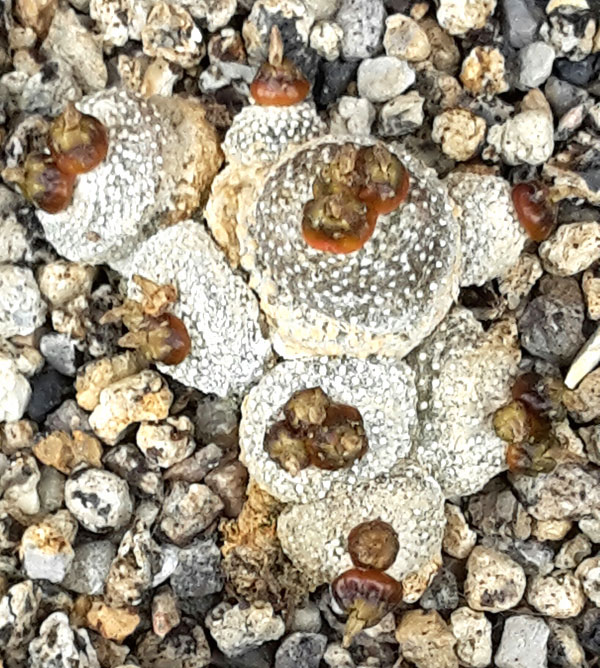Plants that do not take up a large amount of bench space, Blossfeldia are an uncommon sight in the collection of the regular cactophile. But being one of the most primitive of the Cactaceae, with the fewest number of chromosomes, they are unlike anything else in the greenhouse, so should be given a try. Often found under multiple names, it is likely that there is only one species in the genus, Blossfeldia liliputana, and so you do not need a lot to complete the set..

Fig. 1 Blossfeldia floccosa (liliputana) showing fruits. This is an example of one of the multiple names often seen.
Unfortunately the horticulture of this plant can often be tricky and relies on grafted plants, however the habitat of the plants gives the enthusiast a clue to their cultivation on their own roots. Situated in Southern America, in Argentina and southern Bolivia, the plants reside in crevices, often close to or behind waterfalls.
No matter whether grafted or on their own roots, they do offer the opportunity of seed raising by producing plenty of red fruits via self-fertilization (Fig.1) and the plant really wants you to raise that seed, as often flowers do not open at all and just set seed in the same way as Frailea. However, germination is often not the problem, but maintaining the pinhead-sized seedlings can be tricky. Some potential hacks may be found from their habitat by sowing into moss to keep the moisture level high around the plant.

Figs. 2 and 3 A depotted Blossfeldia showing the root system.
My own experience with the cultivation of the plant has noted that the plant tells you when it needs water, and bodies often look sunken, but on watering (even via spray) seem to take on water via the enlarged stomata and not just from its peg-like root system (see Figs 2 and 3) and become swollen again.
If you do want to show this plant, it is currently situated in the Parodia group, so save breaking your back with a large Notocatus magnificus and try a Blossfeldia instead!
Gareth Darbon
No part of this article may be reproduced without permission. Copyright BCSS & the Author 2019
